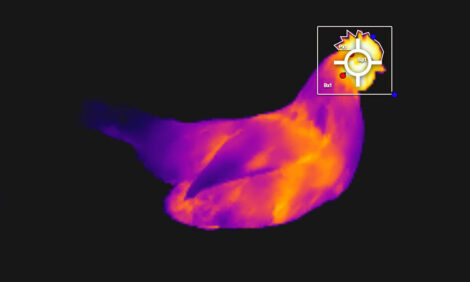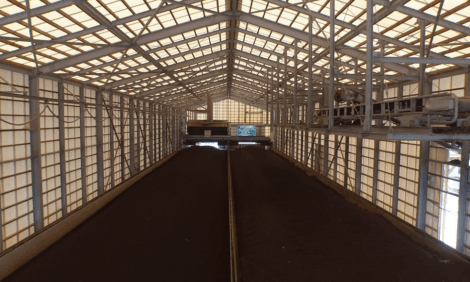



Brazil Poultry and Products Semi-Annual Overview - February 2006
By the USDA, Foreign Agricultural Service - This article provides the poultry industry data from the USDA FAS Poultry and Products Semi-Annual 2006 report for Brazil. A link to the full report is also provided. The full report includes all the tabular data which we have ommited from this article.Report Highlights:
The outlook for poultry in 2006 calls for continued expansion in both production and exports, although at lower rates than in 2005. Broiler production should reach an-all time record of 10 million metric tons boosted by higher domestic demand and estimated record exports at nearly 3 million metric tons.
Executive Summary
Post projects Brazilian broiler production and trade to continue to expand in 2006, but at a
lower rate than last year. The increase in broiler production will likely be driven by higher
domestic demand and a smaller increase in exports. Economic analysts foresee economic
growth in the range of 4 percent, lower inflation, a drop in unemployment and higher real
income. These indicators are likely to influence consumer confidence as domestic
consumption supports growth in 2006.
Market analysts, however, point out some constraints that could adversely impact on
production and trade of Brazilian poultry in 2006. They are: high interest rates in Brazil;
further appreciation of the Brazilian currency relative to the U.S. dollar, which could adversely
impact packers’ profitability due to the relative increase in production costs; and a possible
drop in poultry consumption in some world markets due the concerns with the spread of the
Avian Influenza. Although Brazil is free of Avian Influenza, the country is in the route of some
migratory birds. As of today, the Ministry of Agriculture has not implemented an official plan
to deal with a possible outbreak of Avian Influenza, the so-called Regionalization Plan. This
plan is expected to be under public consultation soon.
Commodity Outlook, Broiler: Production
Post revised upwards broiler production in 2006 to 10 million metric tons, seven percent
from the record production level of nearly 9.4 million metric tons last year. The increase in
production reflects the following factors: a) firm domestic demand derived from higher
employment rate and consumer purchasing power as the economy improves and continues
to boost demand for animal proteins. In addition, because of an election year, additional
federal funding for social programs to fight hunger and improve nutritional levels of the poor
will help increase broiler demand – the lowest priced source of animal protein in Brazil; b)
expansion in the export market will likely continue in view of the animal health (mostly Avian
Influenza) problems faced by different countries; and, c) continued expansion of broiler
exports to new markets due to strong market promotion efforts jointly conducted and
financed by the Brazilian government agency for market promotion.
The major constraints that could adversely affect broiler production and exports are: a)
continued appreciation of the Brazilian currency; b) continued policy of higher domestic
interest rates which combined with higher production costs can reduce producer’s profit
margins; and, c) an outbreak of animal diseases.
Post also revised broiler production in 2005 to reflect final production data obtained from the
trade. In 2005, broiler production reached nearly 9.4 million metric tons, up 11.3 percent
from the previous year. Booming chicken exports and domestic consumption accounted for
most of the increase in production last year boosted by a significant increase in broiler
chicken production.
Trade
Post revised upwards broiler exports in 2006 to reach nearly 3 million metric tons, up 5 percent as opposed to an increase of 15 percent in volume during 2005. The lower rate of increase in 2005 is attributed to a projected drop in domestic demand in some import markets due to the scare of Avian Influenza and because of an estimated decline in broiler exports to Russia due to higher competition from US exports and Russian quotas.
Trade Review for 2005
Post updated export data for 2005 in view of the final numbers obtained from the trade.
Brazilian broiler exports in 2005 increased by 15 percent in volume (2.846 million metric
tons against 2.470 million metric tons in 2004) and 35 percent increase in value (US$ 3.5
billion in 2006, against US$ 2.6 billion in 2004). The average export value increased by 17
percent to US$ 1,232.82 per metric ton.
Breaking down broiler exports by major components: whole broiler exports in 2005 reached
nearly 1.1 million metric tons, with an increase of 7 percent over 2004. The average export
price for whole broilers in 2005 was US$ 1,041.39 per metric ton, up 26.6 percent over the
previous year. Exports of broiler parts reached 1.7 million metric tons, up 18 percent over
2004, valued at US$ 2.2 billion, with a significant increase of 32 percent from the previous
year. The average export price for broiler parts in 2005 reached US$ 1,304.79 per metric
ton, up 11.8 percent from the previous year. This confirms Brazilian broiler exporters’
strategy to increase profitability by focusing on higher value products, such as broiler parts
and further processed products which increased significantly in 2005 by 86 percent in
volume, reaching 83,980 metric tons, valued at US$ 184 million, up 82 percent from 2004.
In 2005, Japan became the largest ma rket for Brazil’s broiler exports, mostly broiler parts.
Exports to Japan increased by 24 percent in volume, and by 34 percent in value. Problems
with Avian Influenza in Asia explain most of the increase in exports to Japan.
The European Union was the second largest market for Brazilian broiler exports, mostly
broiler parts, with an increase of 24.9 percent in volume, and 34 percent in value. The
increase in broiler exports to the European Union also reflects a significant increase in
exports of processed broilers. The European Union market accounted for nearly 80 percent of
all processed broiler exports from Brazil.
Saudi Arabia, traditionally Brazil’s largest single export market for poultry, now ranks third.
In 2005, Saudi Arabia increased imports of Brazilian broilers, mostly for whole broilers, 14
percent in volume and 38 percent in value. Saudi Arabia also accounted for nearly 45 percent
of all Brazilian broiler exports to the Middle East.
Russia remained as the 4th largest market for Brazilian broiler exports in 2005 despite quota
restrictions. Shipments to Russia totaled 258,187 metric tons, up 34 percent from 2004. The
value of broiler exports to Russia was significantly up in 2005 by 65 percent, reflecting a
larger increase in broiler parts.
Commodity Outlook, Turkey: Production and Trade
Post revised slightly production and trade data for turkey in 2006 to reflect new numbers obtained from the trade. There are no major changes in turkey data.
List of Articles in this series
To view our complete list of 2006 Poultry and Products Semi-Annual reports, please click hereSource: USDA Foreign Agricultural Service - January 2006








